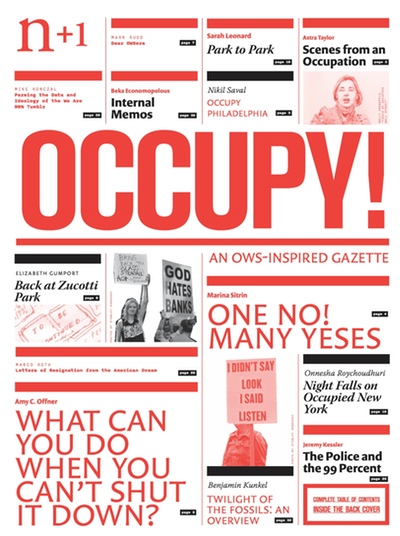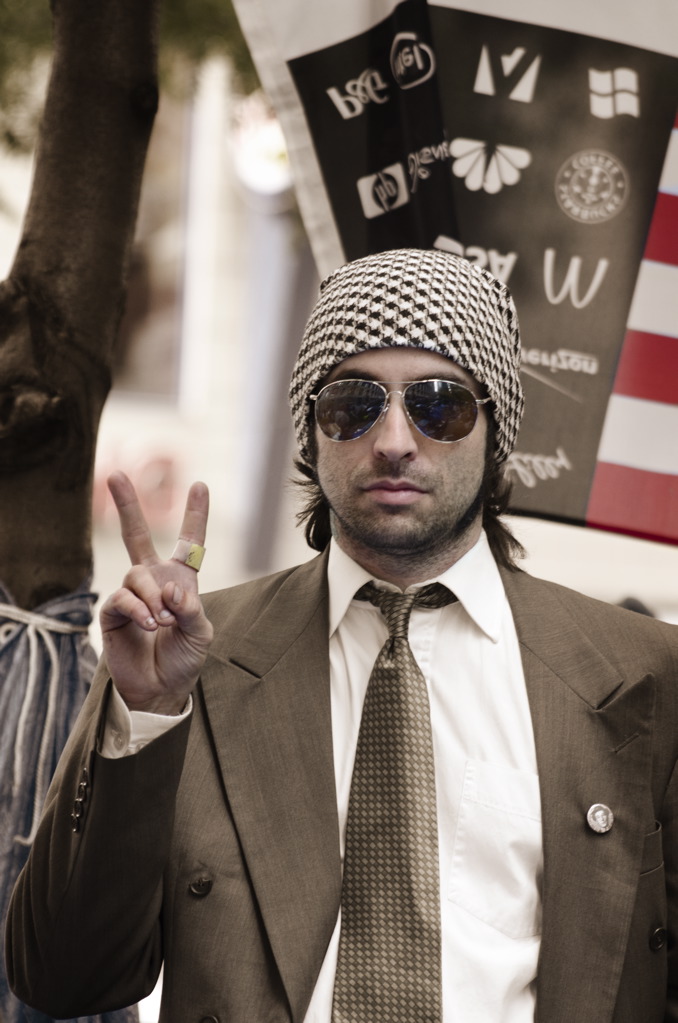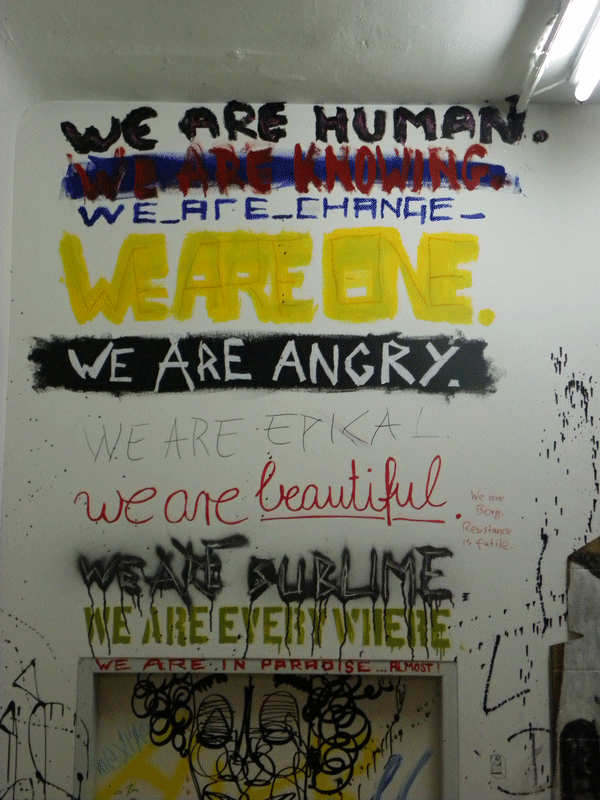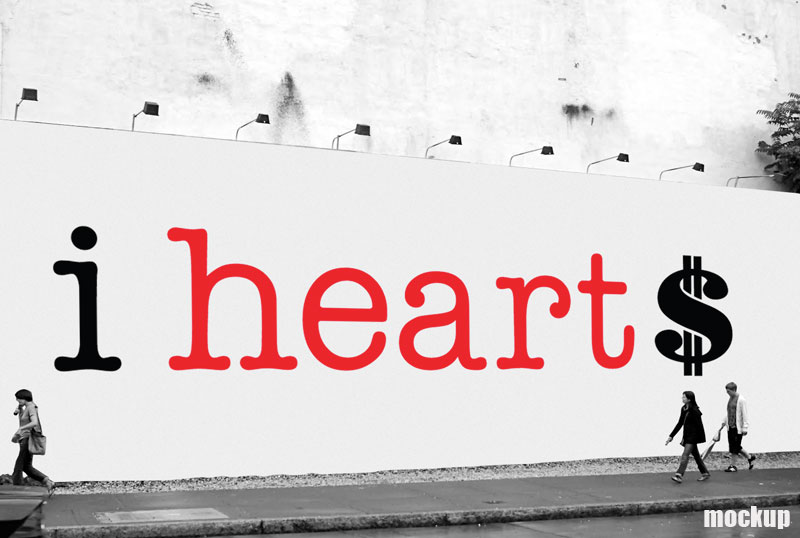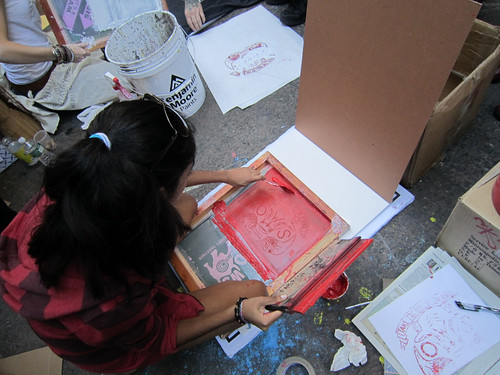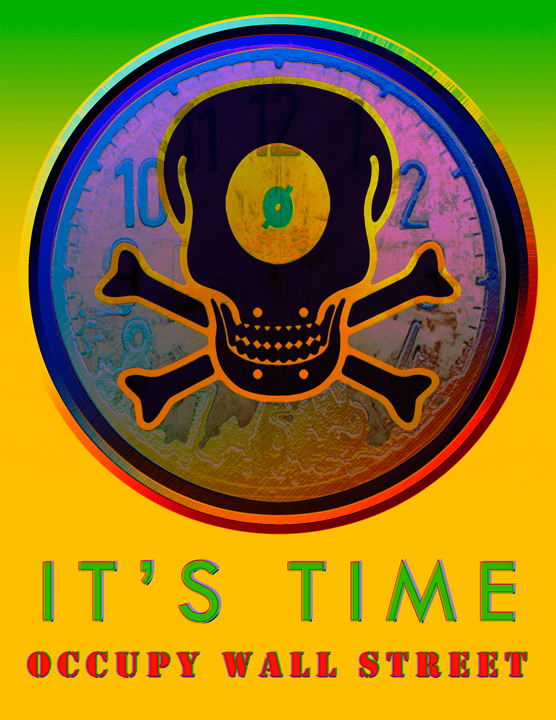hi all, had a really interesting conversation today on the subway home as I was leaving OWS with a woman who worked for a bank on wall st. and she was open to having a dialogue, but really felt like she and her co-workers were taking the hit for the 1% even tho she was a divorced mom who had to work her way up from nothing. We tried to explain to her not to take it personally, that it was the structure of the system that was the issue but people of her ilk are very goal oriented and really was hoping to hear our demands and proposed solutions. I invited her down there to discuss and told her how important it was that she participates in the process and see for herself what is happening, rather than taking what the media says at face value....anyway, its just these types of dialogues that I think is what's best about this movement. It was an uplifting moment for all of us just to communicate.
In other news, my friend in Canada posted this amazing poem/song on facebook, and I told her there was a web archive for poetry, so Paul, or someone else out there if u have a spare moment, can you upload this, and maybe send me a link, so I can tell her it on line?
Thanks so much!
O
>
Zipporah Lomax :
The world is stirring...history unfolding beneath our feet, before our eyes.
Inspired by the OWS movement, I started writing a song. It quickly became more of a poem...a poetic commentary...my take on the issues we face.
I'd like to share it as my small contribution on this day of solidarity...
**************************************************************
'Common Ground'
everything has gone awry
a great divide has grown
between the hands that hoard the pie
and the measly crumbs we're thrown
they enjoy their privileged lives
while our homes are foreclosed
they're keeping us in line
with all the wealth that they withhold
they profit off our ignorance
expecting us to play the part
of obedient indifference
robots, with shopping carts
well-designed to distract
and keep us misinformed
the media's been hijacked
by those who bank offshore
they've poisoned our sea and sky
through oil-driven greed
they contaminate our food supply
with their modified seeds
they've stolen our autonomy
and our right to choose
they perpetuate inequality
through narrow-minded rules
they've made health a business
selling pills to those in need
they benefit from illness
growing rich off our disease
we know it won't be long
before they try to buy our souls
before our lives have been withdrawn
exchanged, for fool's gold
they've kept us on our knees
believing change would never come
but down on wall street
the revolution's just begun
we're waking from our slumber
it's time to stand up strong
take back what they have plundered
we've held our tongues too long
we'll shout until our cause is heard the whole world 'round...
they may tie our hands, but our voices cannot be bound...
something's gotta give...the wall has gotta come down...
...we all deserve to live on common ground...
**************************************************************
 Wednesday, October 26, 2011 at 11:44AM
Wednesday, October 26, 2011 at 11:44AM 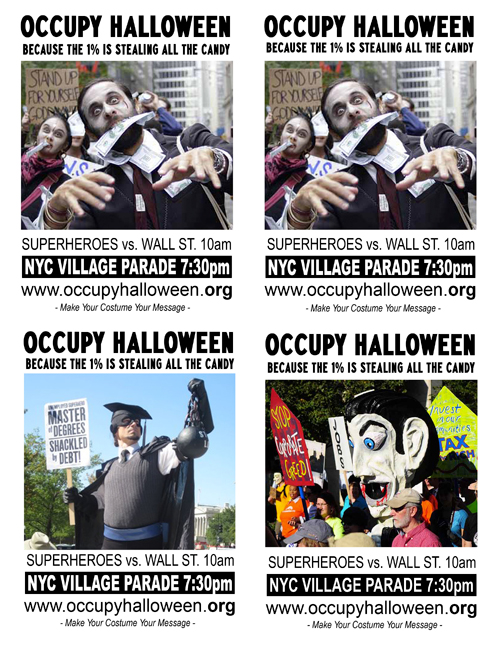 AVAILABLE SOON IN THE OCCUPENNIAL OCCUGANDA DOWNLOADS SECTION
AVAILABLE SOON IN THE OCCUPENNIAL OCCUGANDA DOWNLOADS SECTION admin |
admin |  Post a Comment |
Post a Comment |  OCCUPY HALLOWEEN,
OCCUPY HALLOWEEN,  occu-ganda,
occu-ganda,  occupennial in
occupennial in  DOWNLOADS,
DOWNLOADS,  activism,
activism,  events,
events,  interventions
interventions 
